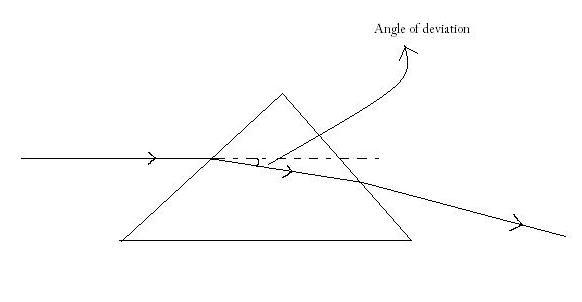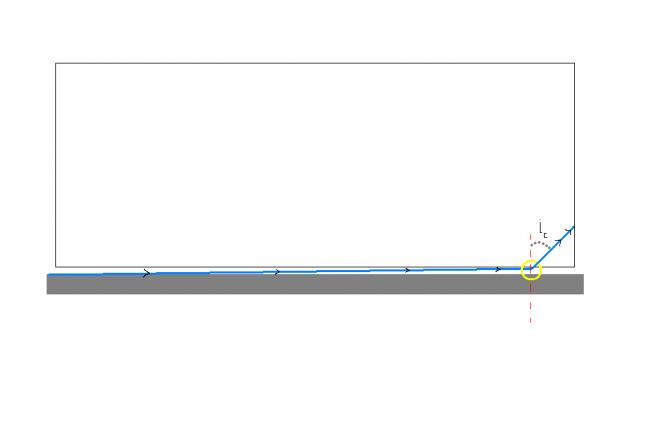Grazing emergence may be considered to be a rather special case , but i don't see anything special in the emergent ray during grazing incidence....(Same old ray bent at a certain angle of deviation...)

plz. explain this: when we talk of grazing incidence in case of a prism, like when light is almost parallel to one of the faces, then how does light come to kno when to go inside the prism???,as it almost paralel only in case of grazing emergence it can be explained, but how in case of incidence
Am not able to get your question, what do you mean by how does light come to kno when to go inside the prism???
Grazing emergence may be considered to be a rather special case , but i don't see anything special in the emergent ray during grazing incidence....(Same old ray bent at a certain angle of deviation...)

@ abhishek, this is not grazing incidence, let BC denote the base of the prism and A the upper vertex, then if the incident ray is parallel to the face AB then its a case of grazing incidence, such a case is said to produce maximum deviation of the ray, now i am asking, when light ray is parallel to AB then how does light come to know when to go inside the prism??
I have the same problem but i think that i might be able to help you...
GRAZING incidence is the limiting case of light entering or TRYING to enter a transparent media... such that on an average such a ray can be considered parallel to the base .. but actually it is always inclined to the line of contact of the (transparent)base i.e length OF THE TABLE etc ..
For numericals it is often approximated to be simply parallel to the base or the length of the parallel surface on which prism etc is kept .. but actually it is not...
SO NATURALLY THE RAY OF LIGHT KNOWS WHERE TO ENTER AND WHEN TO ENTER ...
in this figure ray of light will be transmitted into the transparent cuboid at a single point which is encircled in YELLOW

I was about to post my doubt which is almost similar to ur question ..
tks for posting such a genuine doubt :) and finally solve this question which uses the application of ur doubt ::
On placing a transparent glass cube on the printed page of a book, it was found that the covered printed words of the book are not visible from any of the four (lateral) sides of the cube. Explain ur answer with the help of a simple diagram. Critical angle of glass wrt air is 42°
redion bhai jo bhi hai tu ...question padhne ka interst nahi hai .. to unko daalta kyun hai .. ? >(
consider the square u've posted in ur figure drawn in post #6,, and assume it to be a face of a cube let the let the upper left vertex be denoted by a point A and the vertex near the angle Ic by C. { the vertex perpendicularly below A is assumed to be D and perpendicularly above to C is B}
assume any general point say P on line DC
now draw the line AP and @1 be the angle PAD, Light can be incident from anywhere along the bottom most face containing BC, let @2 be angle PAB, @1 + @2 is constant, now the minimum value of @2 is 45 degrees at point C, but this means that light will always be incident at angle greater than critical angle, so it will always undergo TIR, but this approximation is ONLY valid if the thickness of the cubical slab is very less as otherwise we can defitely see
but sorry bro for late reply!